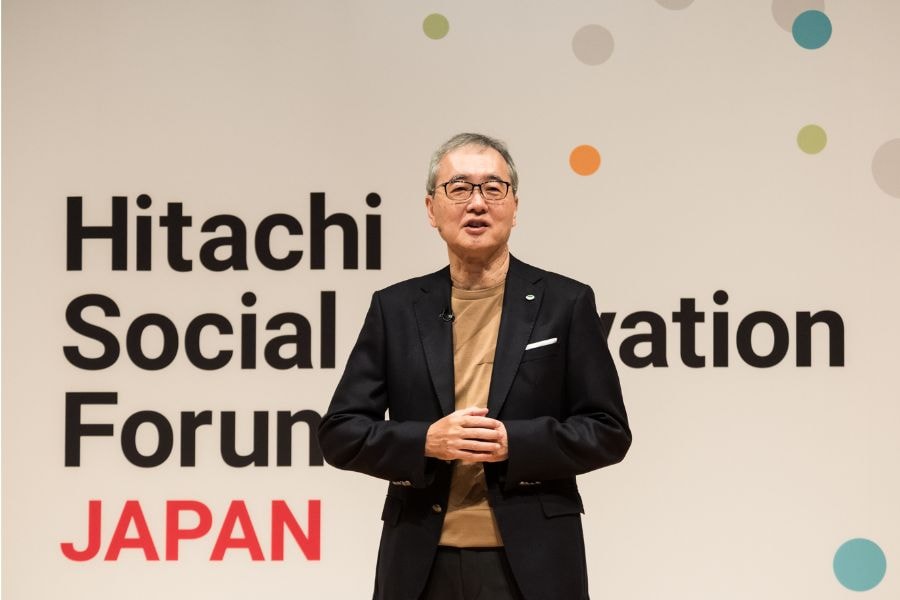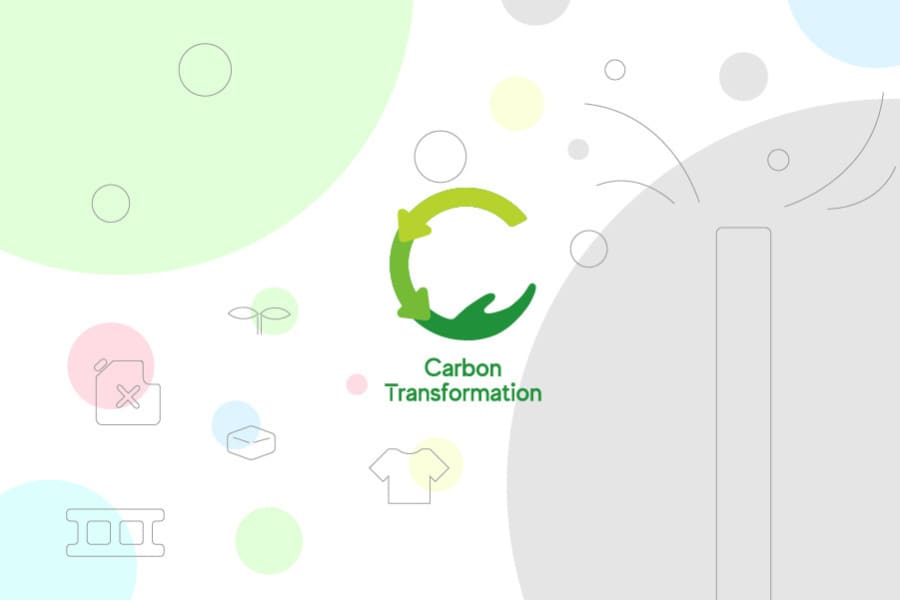Reducing CO2 by About 520 Tons Annually: Hitachi GLS Adopts EV Forklifts
Mar. 21, 2024
Kai O'Connor
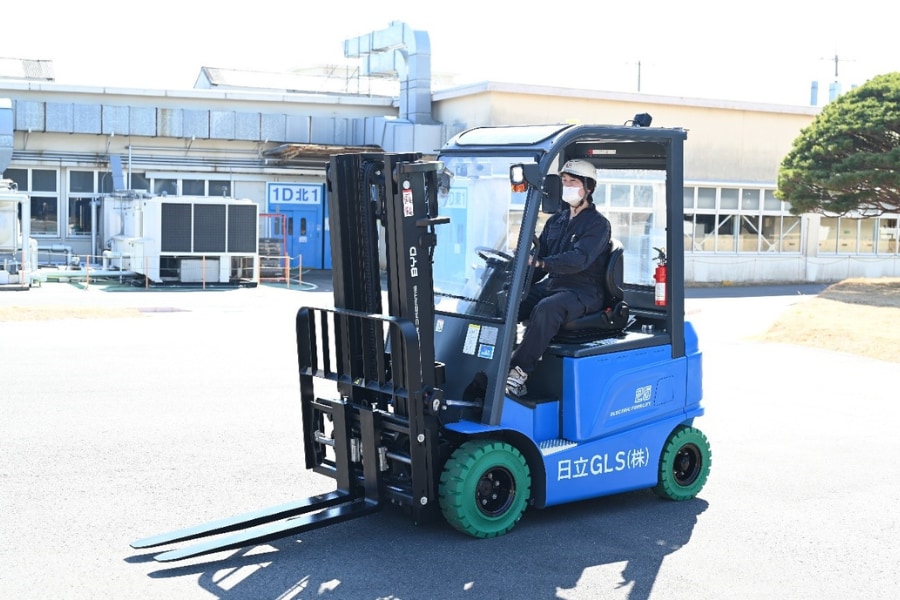
Hitachi GLS, which operates home appliance, air conditioning, and other such businesses, announced on March 1, 2023 that it has adopted a EV forklift that run on electricity stored in batteries at its Taga Works, located in Hitachi City, Ibaraki Prefecture, Japan. Plans are also in place to adopt EV forklifts at Tochigi Works, located in Tochigi City, Tochigi Prefecture, Japan, in the future. This is expected to reduce CO2 emissions by about 520 tons annually. This article reports on an interview with the person in charge of this move about the background and benefits.
Introducing about 150 EV forklifts into operations

As climate change becomes a pressing issue, many companies are implementing various initiatives for achieving decarbonization. Hitachi has set a goal of "carbon neutral," by which CO2 emissions are net zero, for its factories and offices by FY2030.
As a part of this initiative Hitachi GLS has started adopting the EV forklift into the operations of its Taga Works, a base for the development and manufacture of such appliances as washing machines and vacuum cleaners. Abukawa of the Procurement Division, which is responsible for the procurement of materials, parts, and other items at Hitachi GLS, said “It was necessary to adapt environmentally clean forklifts, which are indispensable to the process of making Hitachi home appliances.”
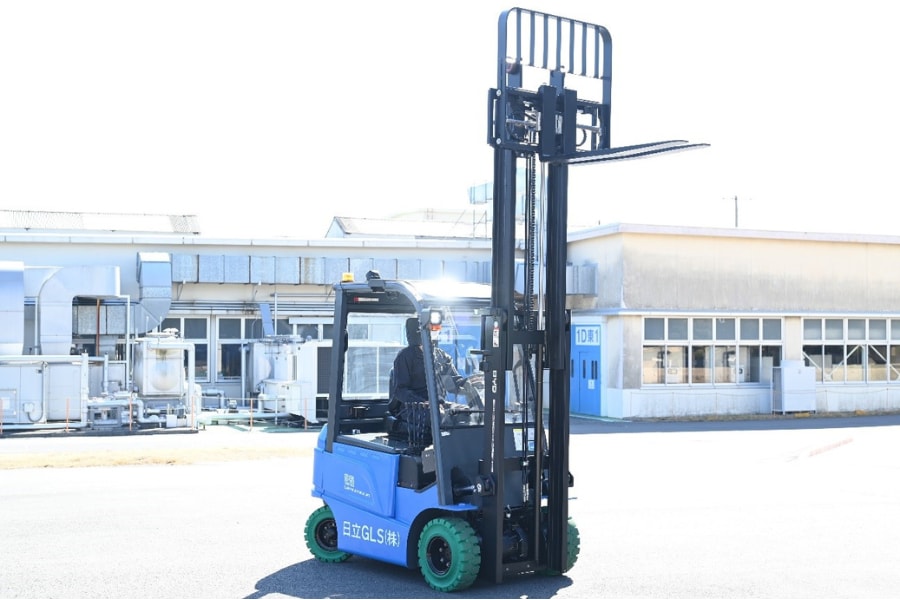
Abukawa went on to say that “Reducing CO2 emissions is a critical challenge for Hitachi GLS. Though energy-saving measures are already being implemented in the production process, the forklifts operating daily to convey parts and other items use gasoline, an emitter of CO2, as fuel. This is when we turned our attention to EV forklifts."
In addition to Taga Works, Hitachi GLS policy also calls for the gradual switchover of forklifts operating at Tochigi Works, a development and manufacturing base for refrigerators and related equipment, to EV forklifts by FY2026. Combined, the two bases will introduce about 150 EV forklifts into their operations. This is expected to enable reductions in CO2 emissions by about 520 tons annually.
Also improve for the work environment
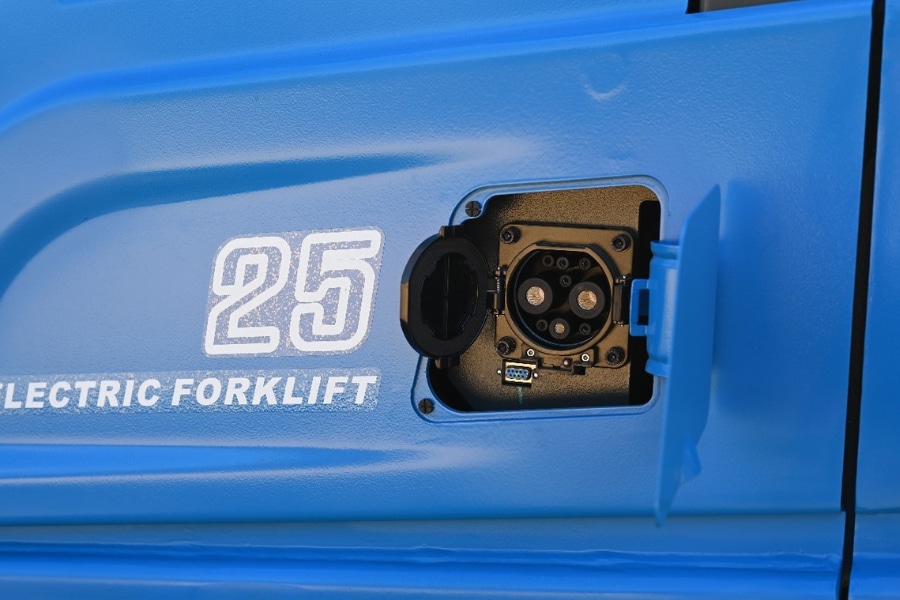
Reduced CO2 emissions are not the only benefits expected of EV forklifts. Abukawa said that they will also lead to improvements to the work environment.
"Gasoline-powered forklifts discharge exhaust gases. Besides outdoors, they are also frequently used indoors. Exhaust gases that accumulate inside are not good for worker health. However, because EV forklifts run on electricity and are therefore exhaust free, they are expected to improve the work environment."
According to Abukawa, Hitachi GLS workers have reported a more-comfortable ride than that of conventional forklifts. They have also said that, as opposed to refuel at a place away by gasoline forklifts, can easy charging of EV forklifts at near the worksite. This will be work is progresses more.
Hitachi GLS implements a number of other initiatives. These include the operational startup of solar power generation facilities at Tochigi Works and the switching of electrical power used at headquarters over to renewable energy sources. Demonstrating his resolve in going forward with environmentally friendly initiatives, Abukawa spoke about the future as follows:
"When importing parts from abroad, Taga Works generates about 150 tons of used packaging corrugated cardboard per month. We will be putting some thought into a resource recycling system capable of handling this cardboard in the future."

